API Design | Feb 14, 2025 | 10 min read | By Savan Kharod

Savan Kharod works on demand generation and content at Treblle, where he focuses on SEO, content strategy, and developer-focused marketing. With a background in engineering and a passion for digital marketing, he combines technical understanding with skills in paid advertising, email marketing, and CRM workflows to drive audience growth and engagement. He actively participates in industry webinars and community sessions to stay current with marketing trends and best practices.
API documentation is more than just a guide for developers. It serves as the gateway to understanding, implementing, and leveraging APIs effectively. A well-crafted documentation can significantly reduce development time, minimize errors, and improve integration outcomes.
In this article, we will explore eight API documentation examples, breaking down their strengths and what makes them a benchmark for the industry. Whether you're designing your API documentation or looking for inspiration, these examples provide actionable insights.
API documentation is the backbone of any developer's journey in integrating a service. Poorly written or disorganized documentation can lead to confusion, integration delays, and reduced adoption.
A good and well-crafted API documentation helps:
To build API documentation that truly serves its purpose, follow these best practices and tools to create a smooth developer experience.
Now that you know why API documentation matters, let’s look at these eight API documentation examples and understand what makes them good!
Stop writing docs manually—generate and update them automatically.
Treblle builds clean, accurate API docs with zero extra effort.
Explore Treblle
Stop writing docs manually—generate and update them automatically.
Treblle builds clean, accurate API docs with zero extra effort.
Explore Treblle
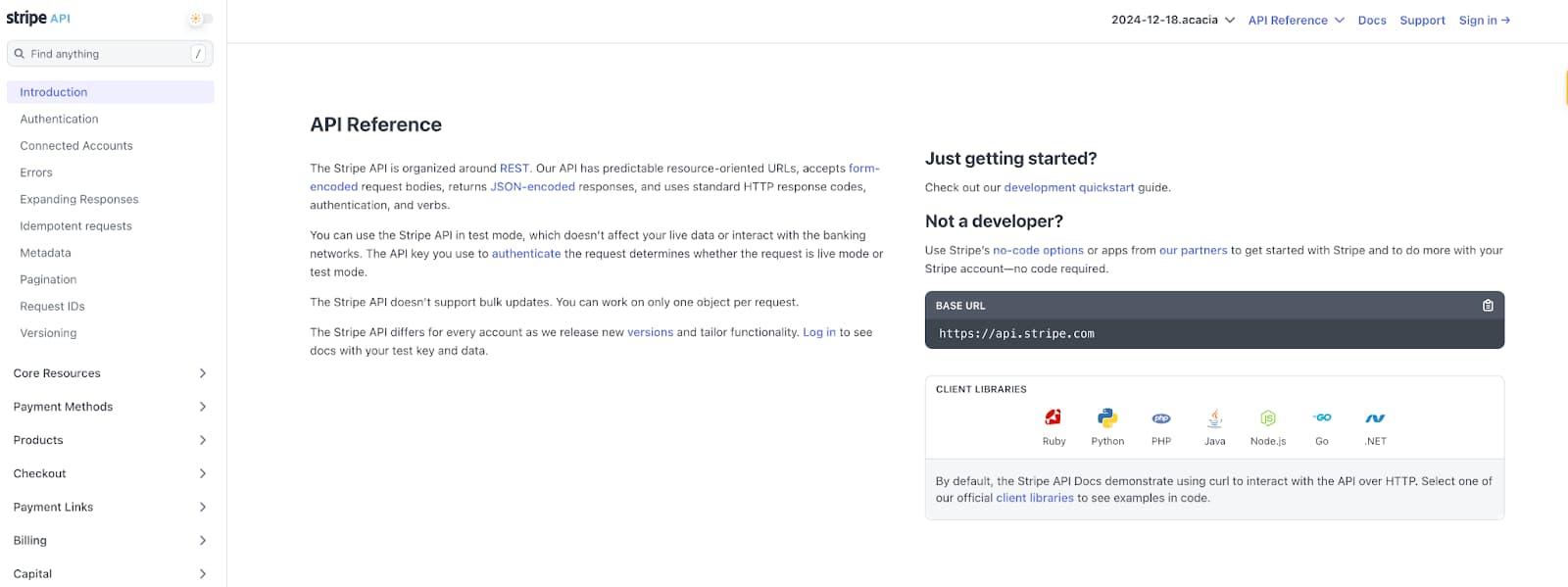
Stripe API Documentation example
Stripe’s API documentation is widely regarded as a best-in-class example of how to display a vast amount of information while maintaining clarity and aesthetic appeal.
From the moment you land on the page, it's clean, and whatever you’re looking for will be found in just a few clicks, reflecting the brand's commitment to user experience.
Their API documentation page also has a search bar that allows you to find anything without losing your pace.
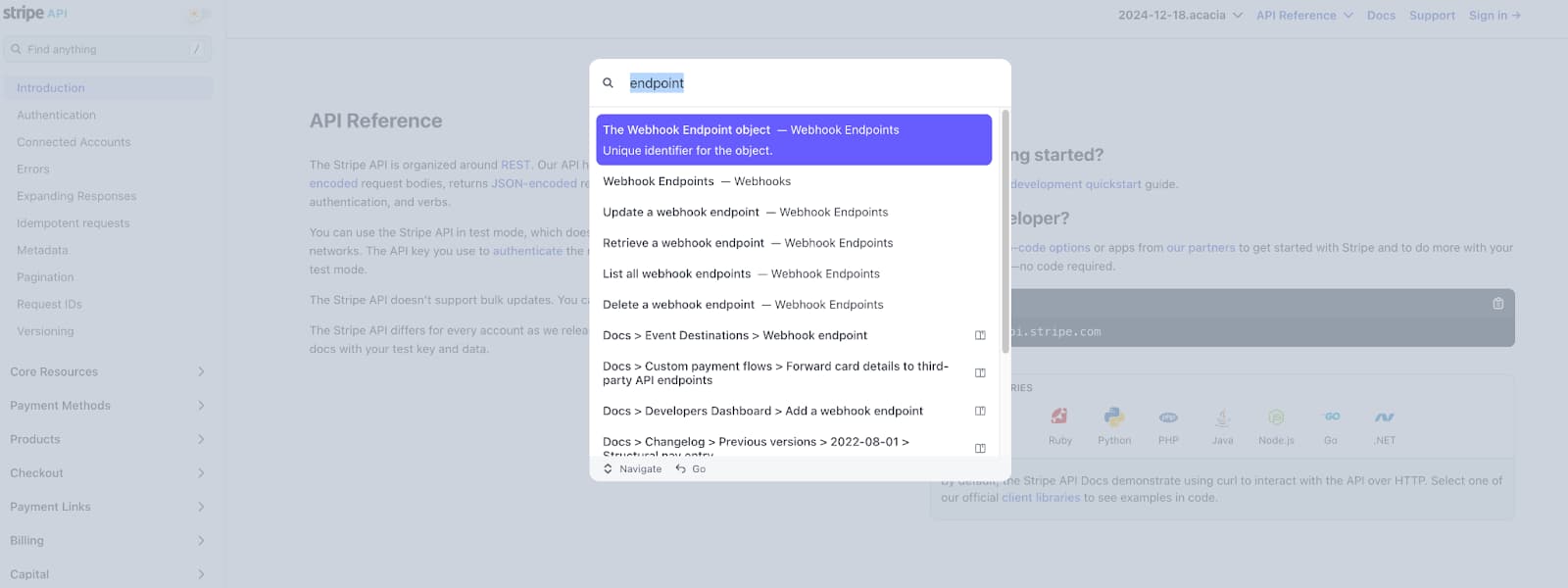
Stripe API Documentation search function
They also have a quick start guide, a standout feature not everyone offers. This guide provides a straightforward explanation of Strip’s API and links to specific sub-sections, ensuring that end users understand the API fairly before diving into complex details.
Key Features:
Stripe’s design emphasizes simplicity, enabling developers to focus on building rather than deciphering documentation.
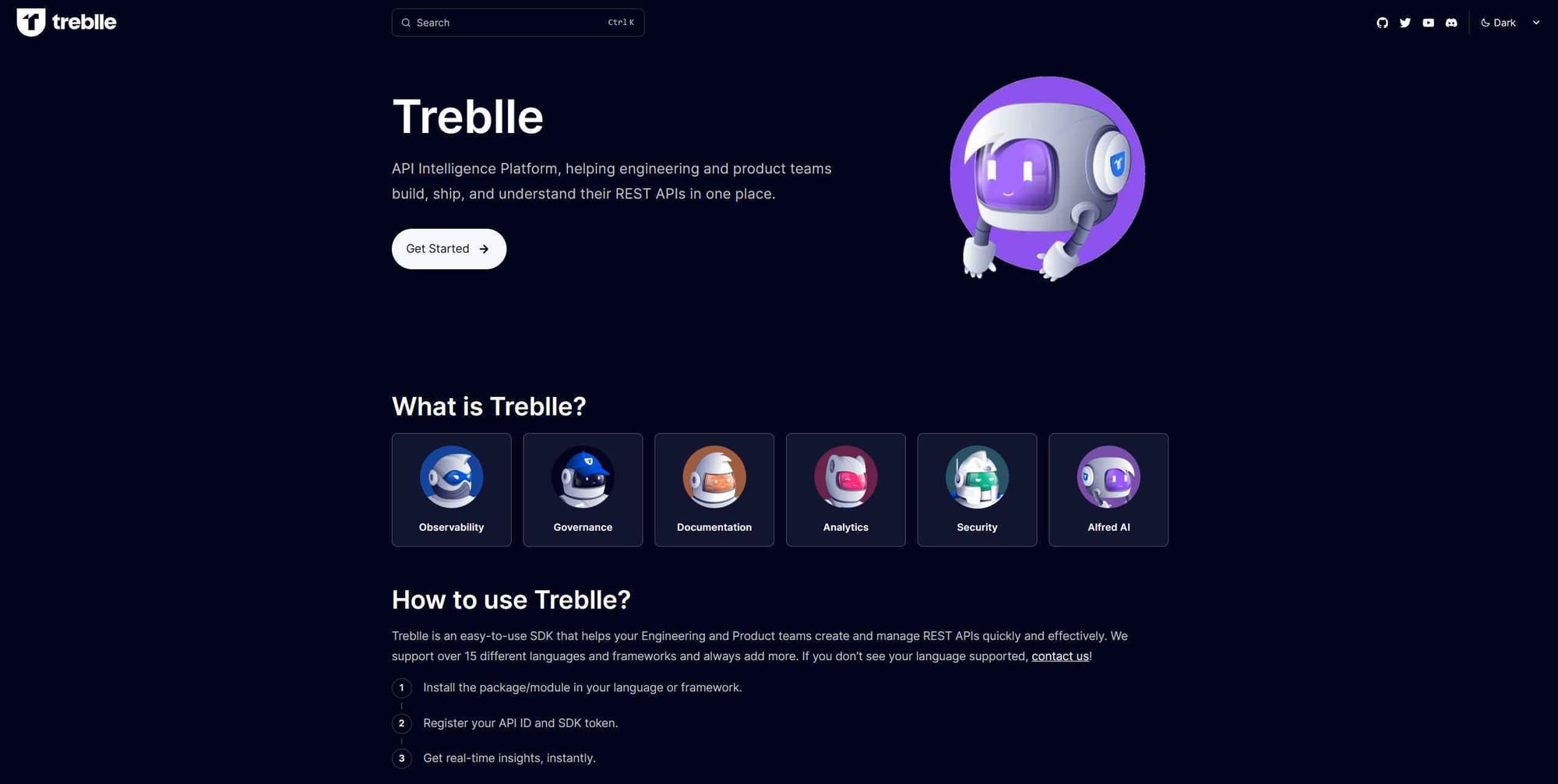
Treblle documentation example
I am not self-promoting, but Treblle’s documentation page is a really good example of what delivering a good developer experience from their first visit looks like.
Whenever someone lands on the documentation page, they are taken to the ‘Getting Started with Treblle’ section, which has a detailed breakdown of all the steps (not much practically!) that a dev needs to follow to start using Treblle.
The section then covers Treblle’s core features, directly linking to key sub-sections. This ensures users gain a solid grasp of the platform before delving into specific sections.
Each sub-section is enriched with detailed videos, written explanations, and comprehensive code samples, catering to different learning styles. All of this is structured in a logical and easily digestible format, making it simple for users to navigate and learn.
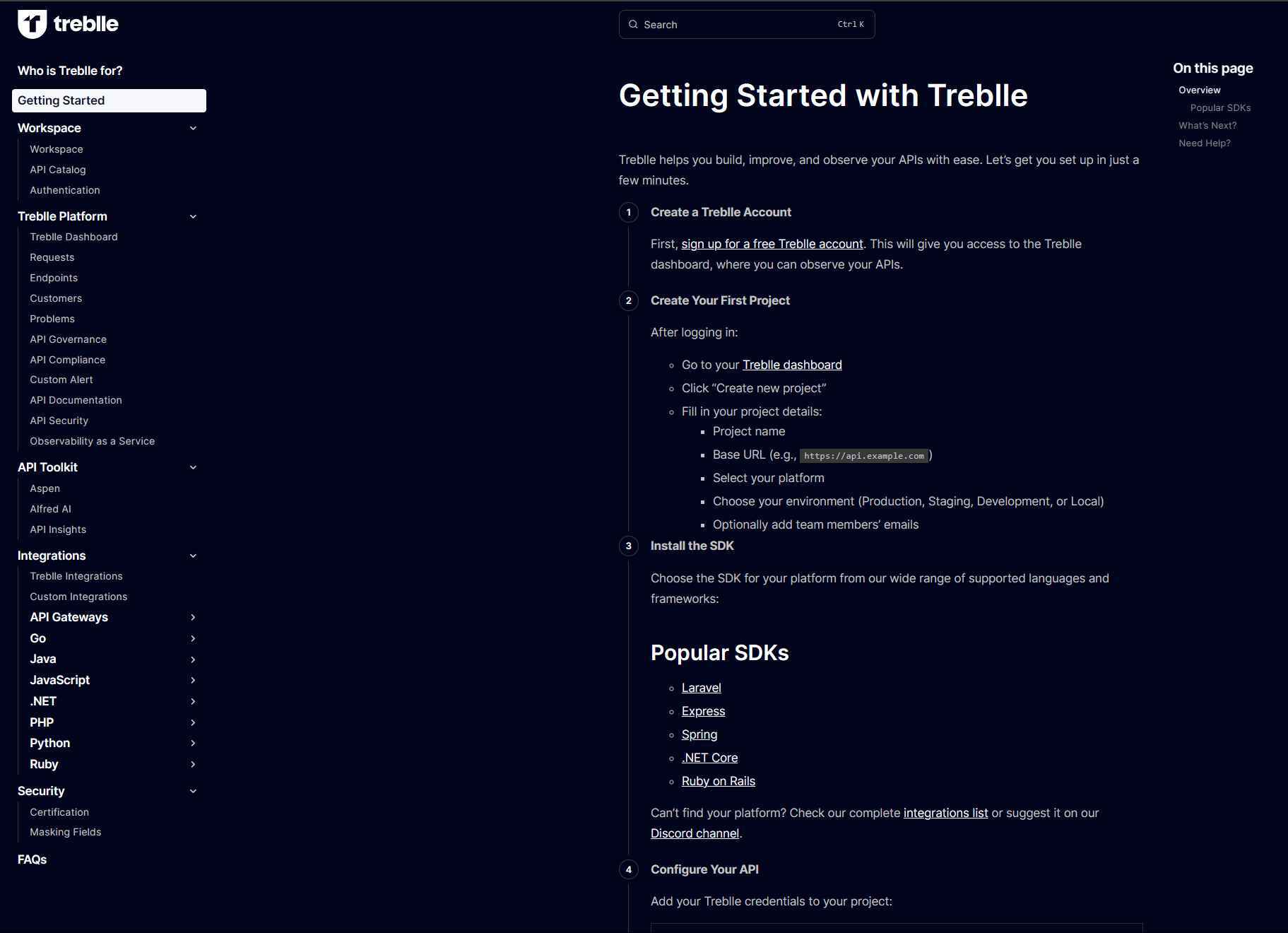
Treblle documentation getting started
Treblle docs also have a dedicated section name ‘Who is Treblle for?’ covering Treblle’s benefit for each job type, and not limiting to just tech
Key Features:
Treblle’s documentation offers step-by-step integration guides with detailed video and code snippets, making it easier for developers to get started.
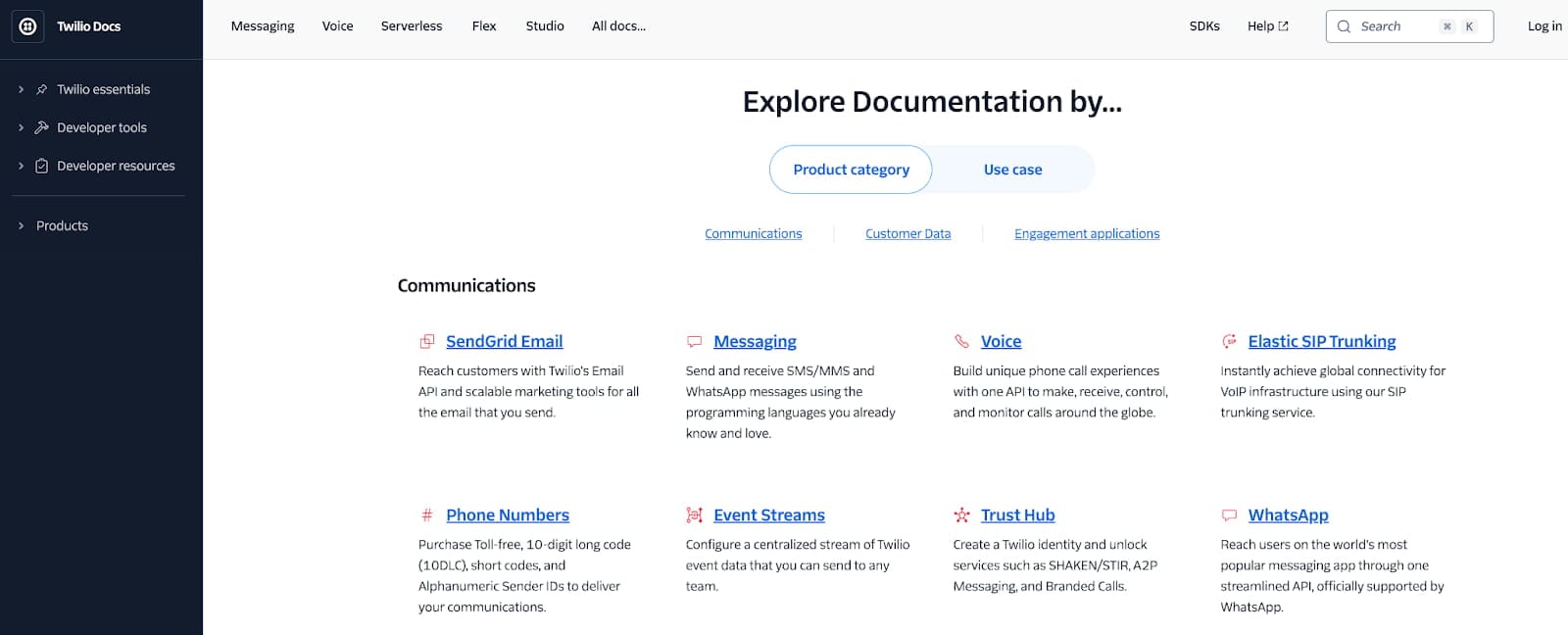
Twilio API Documentation example
One of the widely referenced API Documentation examples by developers and publications is Twillio’s documentation. Twilio’s API documentation mirrors the brand’s developer-first ethos. The homepage provides a straightforward introduction to the extensive range of services, from messaging to voice and video APIs and use cases.
Key Features:
The clear categorization and depth of examples make Twilio’s documentation an invaluable resource for developers.

SendGrid API Documentation example
SendGrid API Documentation is an excellent example of how minimal design can improve user experience. Their email-focused API documentation provides a no-nonsense approach to integrating email capabilities into applications.
Another good feature of SendGrid's documentation is its interactive elements. These allow developers to test code directly within the documentation. Users can input their API key, test the code, and receive immediate feedback.
This approach enhances understanding and encourages experimentation and hands-on learning of how different changes affect outcomes.
Key Features:
SendGrid balances simplicity and depth, making it suitable for beginners and advanced users.
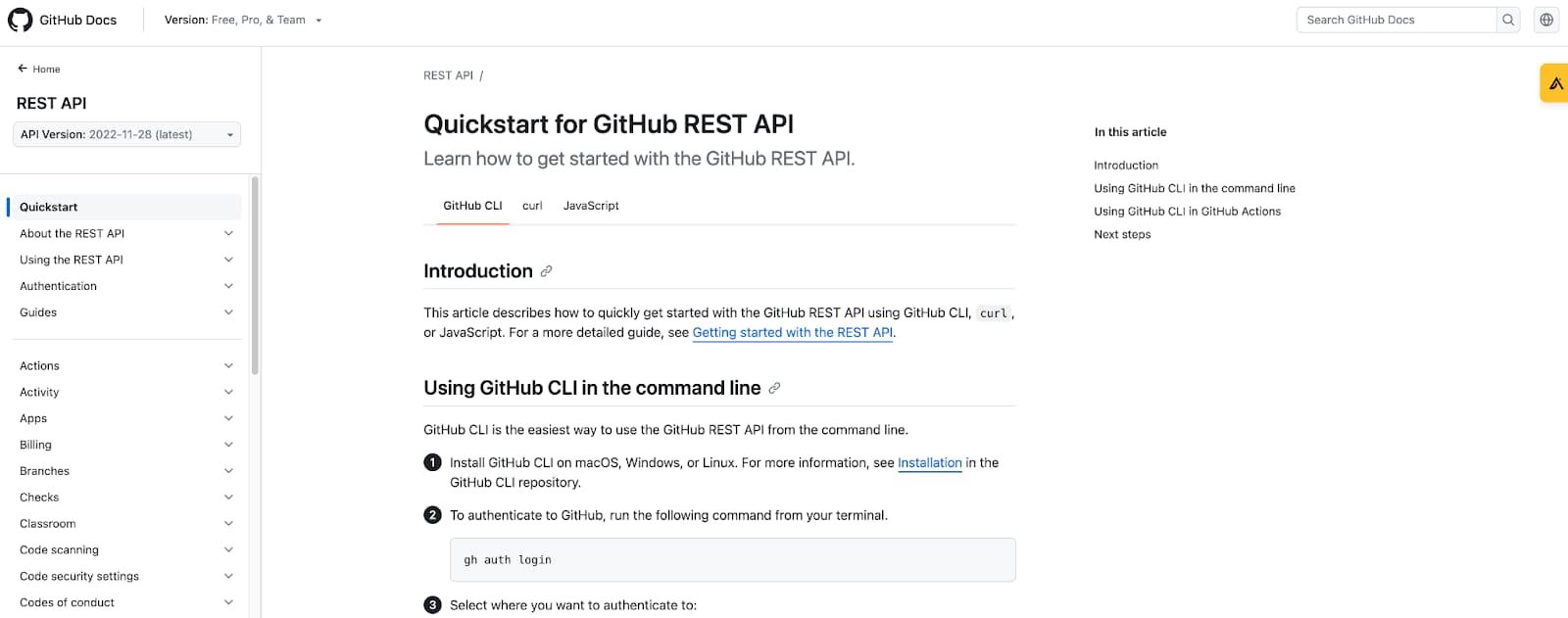
GitHub Rest API Documentation example
Like Twilio's documentation, GitHub’s REST API is also widely referred to in the developer community. Unlike others, GitHub’s documentation doesn’t try to put too much information on one page. Instead, its simple menu directs developers to the correct place with links to reference materials, guides, libraries, and even blogs.
GitHub’s API documentation reflects its extensive capabilities, catering to developers working on everything from repository management to custom integrations.
Key Features:
The documentation’s focus on collaboration and developer support aligns perfectly with GitHub’s mission.
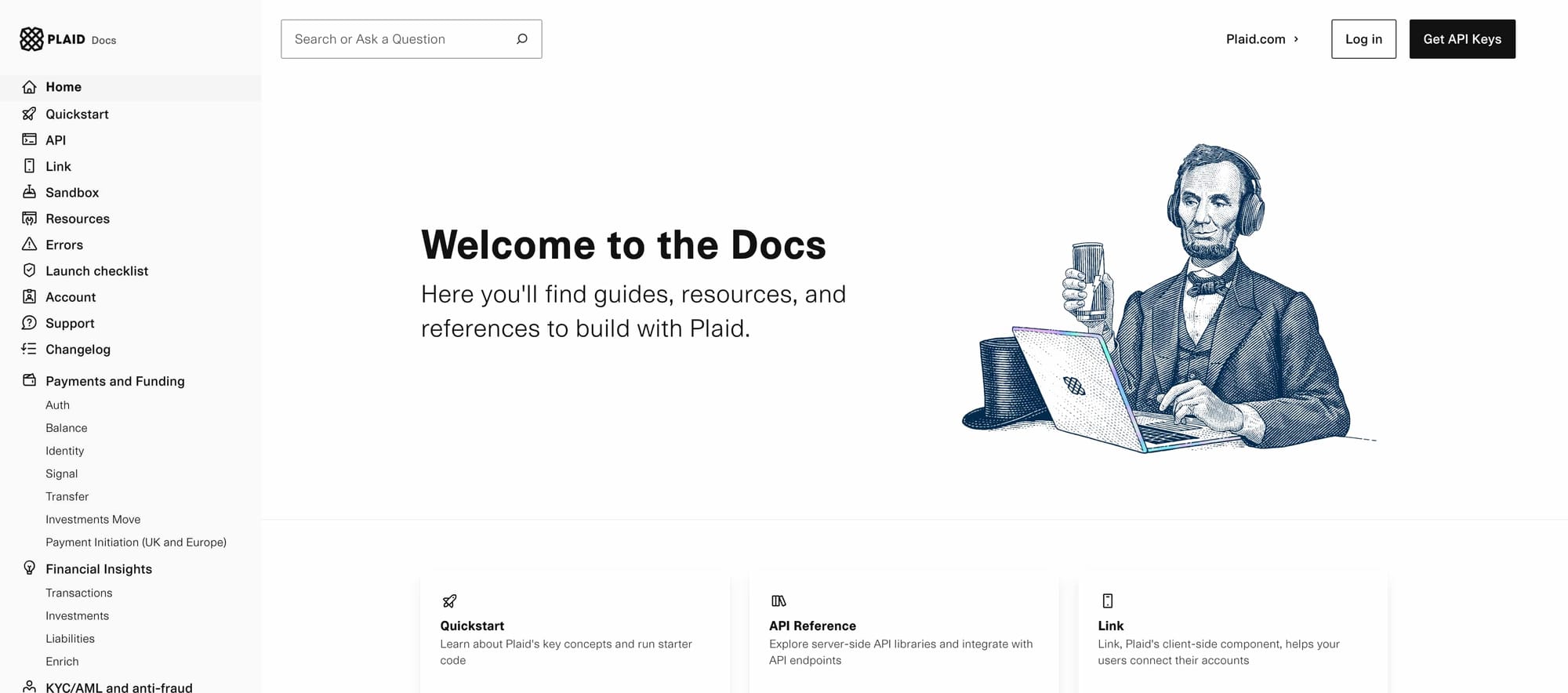
Plaid API Documentation example
Another great API Documentation example that’s worth referencing is from Plaid, a financial API that allows developers to integrate banking and payment systems in their applications.
Their documentation supports developers across all stages of the integration lifecycle. From helpful information to sample requests across all endpoints, Plaid tries to make it easy for the developers to integrate their API. Their content is both visually appealing and logically structured.
Key Features:
Plaid’s documentation excels in guiding developers through the intricacies of financial API integration.
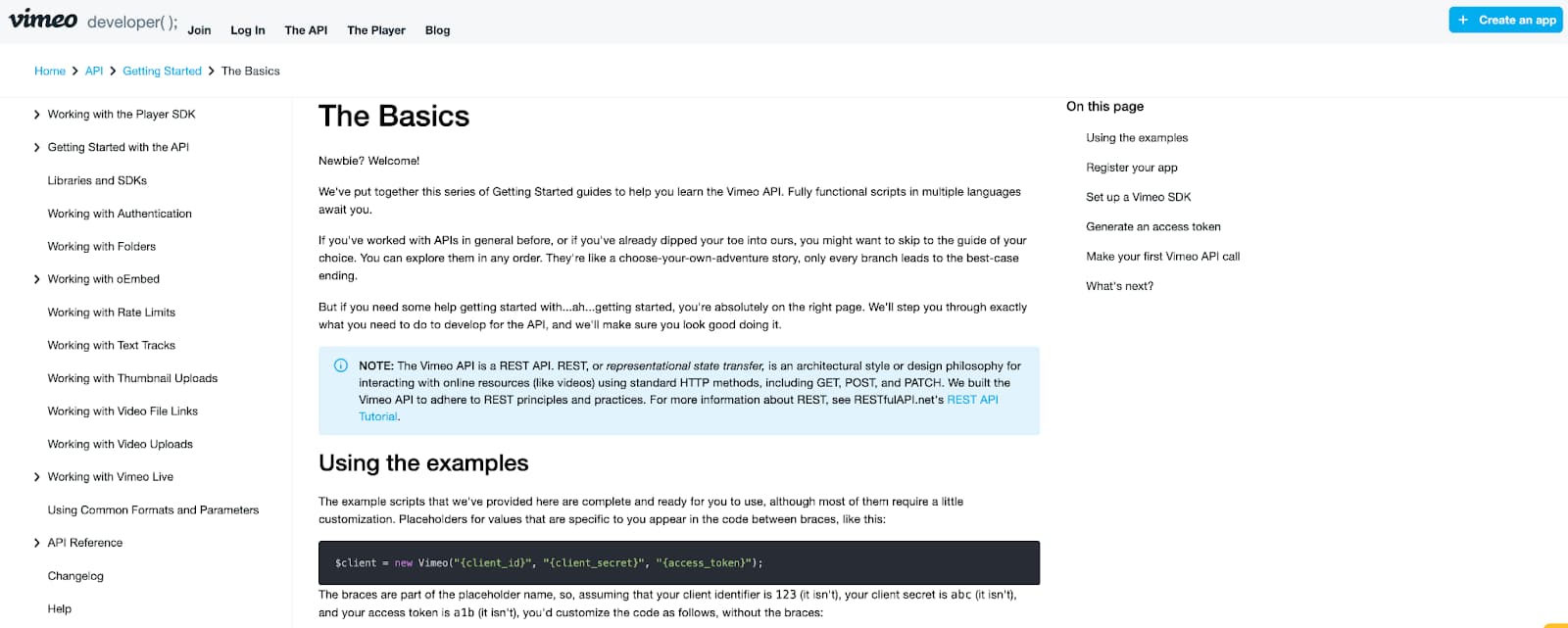
Vimeo API documentation example
If there’s any non-developer-focused company that excels at a quick start guide, it’s Vimeo. Vimeo’s API documentation demonstrates how to cater to both creative and technical audiences.
Terms like REST are explained clearly and approachable, breaking down barriers to understanding. This thoughtful detail ensures that even beginners can follow along comfortably without feeling intimidated.
From getting started with SDKs to working with texts, audio, and other elements, the detailed explanation and a well-crafted design reflect Vimeo’s focus on delivering high-quality media experiences.
Key Features:
This blend of technical precision and creative presentation makes Vimeo’s documentation unique.

Google Maps API documentation example
The Google Maps API documentation is instantly recognizable with its signature Google style, a clean, white background, and the familiar Google font.
This familiarity fosters comfort, putting users at ease from the start. The main page features a well-designed three-column layout, offering a structured and intuitive gateway to maps, routes, and places documentation.
Key Features:
The thoughtful design ensures users always have a roadmap of where they are and where they can go next in the documentation.
What makes API documentation exceptional? Here are the essential components, with examples from the APIs above:
Stop writing docs manually—generate and update them automatically.
Treblle builds clean, accurate API docs with zero extra effort.
Explore Treblle
Stop writing docs manually—generate and update them automatically.
Treblle builds clean, accurate API docs with zero extra effort.
Explore Treblle
Treblle is an API Intelligence platform that helps improve the entire API lifecycle in multiple ways. By following an API-first approach, Treblle ensures that documentation is always aligned with development, making integration easier.
Here are the two ways how Treblle, in particular, enhances the API documentation:
Treblle's API documentation feature automates the entire process of creating and maintaining API integration documents, eliminating the need for manual effort.
From the moment an API is developed, Treblle automatically generates well-structured documentation, giving developers access to comprehensive and accurate docs for easy integration.
A key part of great API documentation is having clear, detailed descriptions for every endpoint. Learn more about how to build a perfect API description to ensure your documentation is both informative and developer-friendly.
By providing accurate and latest information at all times, Treblle accelerates developer onboarding and reduces friction during API integration. The result is a faster, more efficient development process supported by documentation that works as a dynamic, always-reliable resource.
Alfred is an AI-powered API assistant that can be integrated into your developer portal, used as a native app, or used inside the Treblle platform. By understanding and continuously learning from your API docs, Alfred can generate integrations, write tests, or create SDKs in any language.
Alfred also eliminates boring and repetitive tasks like model generation, tests, mocks, and schema validation so your engineering team can focus on building enterprise-grade APIs rather than writing integration codes.
API documentation is critical to an API’s success. The eight examples above highlight different strengths, from interactivity to design, that cater to developers’ needs.
These companies set a high bar for what API documentation can achieve by focusing on clarity, organization, and usability. Use these examples as inspiration to elevate your API documentation and empower your developer community.
Stop writing docs manually—generate and update them automatically.
Treblle builds clean, accurate API docs with zero extra effort.
Explore Treblle
Stop writing docs manually—generate and update them automatically.
Treblle builds clean, accurate API docs with zero extra effort.
Explore Treblle
 API Design
API DesignAPI authorization defines what an authenticated user or client can do inside your system. This guide explains authorization vs authentication, breaks down RBAC, ABAC, and OAuth scopes, and shows how to implement simple, reliable access control in REST APIs without cluttering your codebase.
 API Design
API DesignRate limiting sets hard caps on how many requests a client can make; throttling shapes how fast requests are processed. This guide defines both, shows when to use each, and covers best practices.
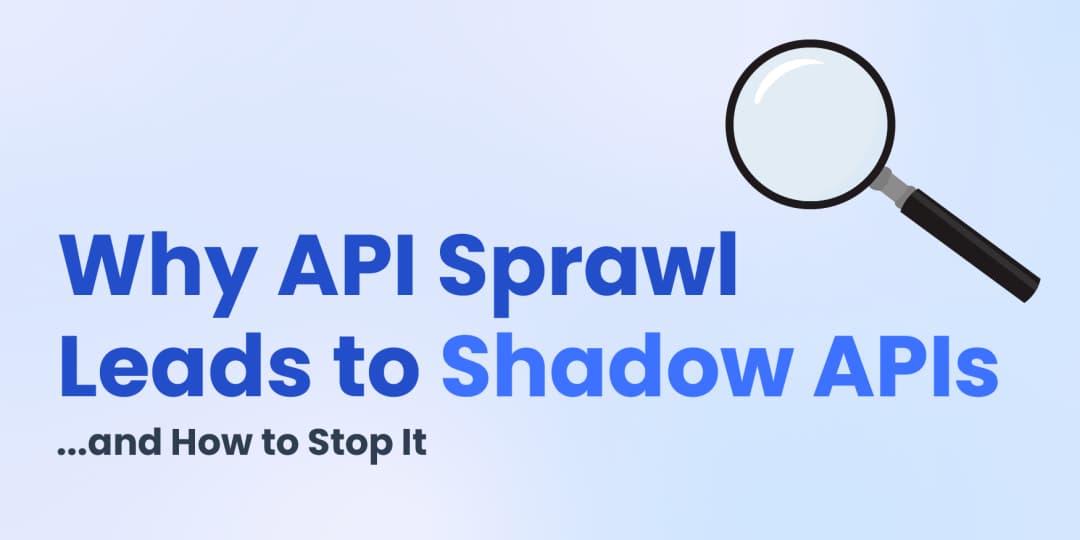 API Design
API DesignUnmanaged API growth produces shadow endpoints you can’t secure or support. This guide explains how sprawl creates blind spots, the security and compliance risks, and a practical plan to stop it at the source.